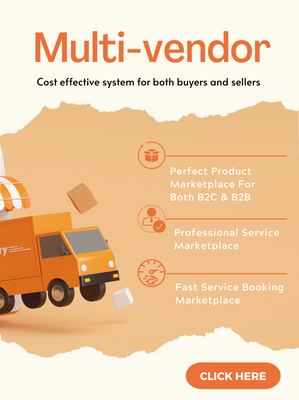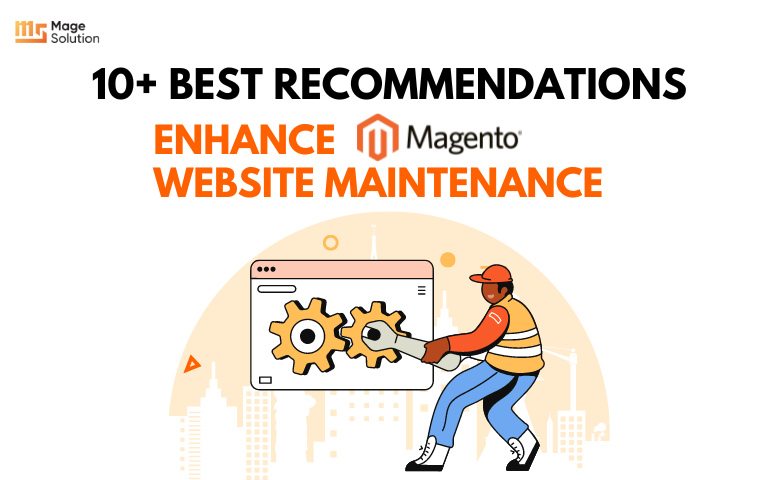Your cart is currently empty!
Ecommerce website development: People, process, checklist and cost consideration
E-commerce website development is one of the top merchants’ concerns. Like the stores in the malls, your e-commerce website should have nice first impression.A attractive window display and well-organized products will invite website visitors to browse and buy. Poor e-commerce website development will make your online store lose sales.
An e-commerce website is not similar to other websites. There are additional features such as payment options, site architecture, design, page load speed, and photography to name a few, etc. You need a platform that supports adequate server resources. Otherwise, your store could significantly slow down or crash.
1. What is eCommerce Website Development?
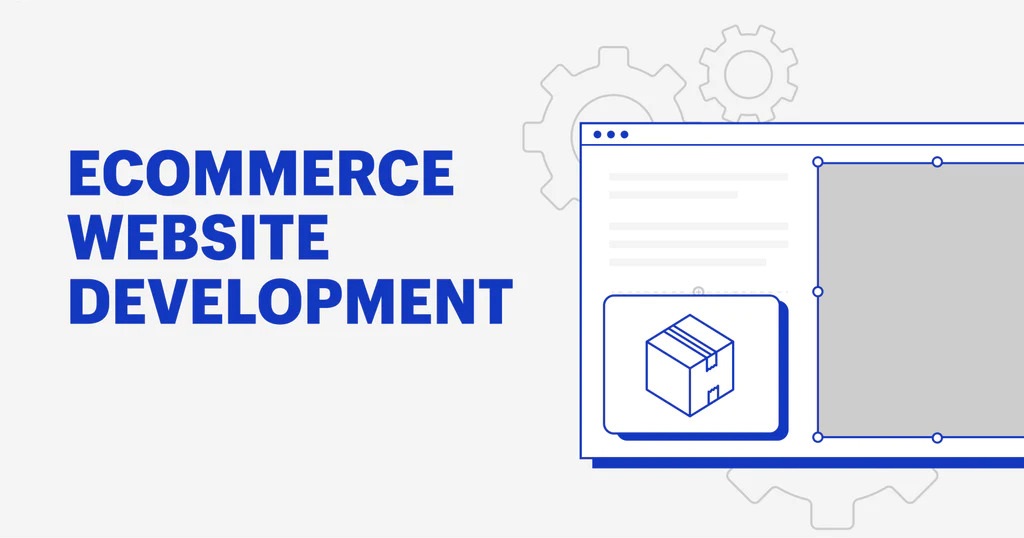
eCommerce Website development, sometimes abbreviated as web dev or web development, consists of various tasks. These containing building, customizing, and expanding sites through coding or programming certain programming languages such as CSS, JavaScript, or HTML. Once successful, web development can switch a website into an effective and robust online business resource that boost your online sales.
Developing a profitable, fully-functional eCommerce store typically includes analysis of your eCommerce requirements, formulation of a web design plan, signing up for web hosting, and scheduling launch of the final ecommerce website.
Also read: Biggest ecommerce challenges and effective solutions to overcome them in 2022
2. Ecommerce website development process
We’re breaking down the process of an ecommerce website development process into 5 major steps, each filled with detail and tips to support you to understand the process and get it right.
Identify the product, service or the customer
It’s important for any business to understand who their client is so they can reach out to him/her in the best solution possible. One of best way to ascertain this is by evaluating the shoppers of your competitors. Some parameters to keep in mind are:
- Gathering the demographic such as gender, age group, income level, education etc.
- Tap social media to identify the people showing interest in your brand/providing through ‘likes’ and ‘follows’
- Interact with customers through feedback, suggestions and reviews to understand the shoppers profile better
Choose a suitable ecommerce website development platform
An ecommerce platform is a software suite that helps you build your ecommerce website where you make your products available, and where your shoppers can conduct transactions. Selecting the suitable ecommerce platform is important for any online business as it is the very foundation of the business.
- ERP, CRM, Database compatibility and integration
- cope for ecommerce website customization
- Payment gateway integration
- Robust backend
- Mobile-friendly, or responsive ecommerce
- commerce marketing
Select the right ecommerce website hosting platform
Your choice of server and hosting can make or break your ecommerce business. It determines your site’s accessibility and performance. There are some parameters to consider when zeroing in on an ecommerce host are:
- Speed: Providing good speed is important as not only do customers have little patience for websites that load slowly, but search engines also rank slow-loading sites poorly.
- Uptime: A good method to assess the kind of service you will get from the host is to check recent uptime records of other sites being hosted by the provider.
- Support: What kind of support services does your host provide? Some just offer the infrastructure, while some also provides managed services that support minimize troubleshooting response time and improve uptime. Sometimes managed services also cover problems management and upgrades.
- Scalability: Select servers that can adapt to your business requirements. This means your site doesn’t go down due to an overload in traffic as well and optimizes the costs.
- Security: As an ecommerce site, you accept payments online so the servers must be PCI-DSS compliant. It is also crucial to make sure data security through secure servers.
Ecommerce website testing
Upon completion of the website development, or even hand-in-hand with it, the next important step is ecommerce website testing. The importance of testing cannot be stressed enough—slow-loading sites, poor navigation, broken links and bugs have been known to lead to losses for ecommerce websites as shoppers leave dissatisfied.
So what is usually checked in the ecommerce website testing process?
- The users/customer flow: Each step and page usually taken by the customer on his/her visit is tested, starting from home page to menu, search bar and results, product listing … right up to payment and checkout, and acknowledgement.
- The functions: the pages, the categories, filters, user registration, shopping cart, payment methods, shipping methods
- Security: Ecommerce website security is so important, not just on the payments page, where shoppers share sensitive information like card details and address, but also throughout the rest of the site. A secure website build trust in users.
- Compatibility: You need to make sure that the website is responsive on all different browsers, on various platforms, and across devices, as mobile phones and tablets.
- Performance and discoverability: To make sure the website load time isn’t too long, simply catch broken links, check for SEO ranking in search engines.
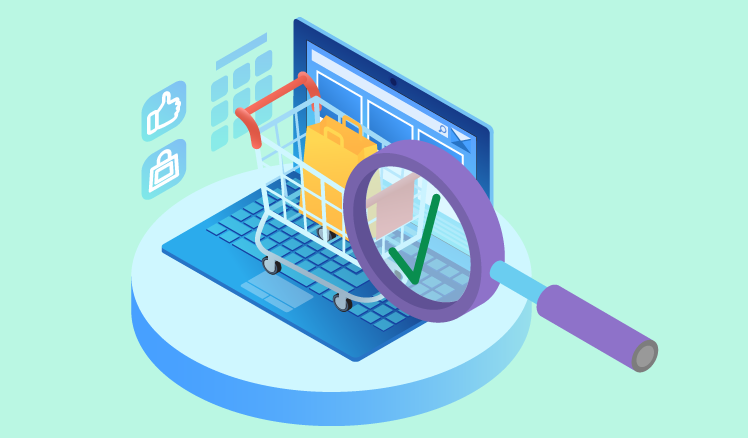
Choose the right ecommerce development partner
Shopping for ecommerce tech development partners or ecommerce vendors can be confusing. The market is chockablock with service providers and with each one claiming to offer the very best, it’s hard to ascertain who is genuine. Look out for these following aspects to choose your ecommerce development company wisely:
- Custom development: The best way to ascertain the ecommerce vendor’s level of commitment and quality of output in the interest shown in your business requirements. Each business comes with unique requirements and circumstances, and your ecommerce website and development process must be changed to suit these requirements. A partner who takes the time to understand your goals, needs and hurdles, and takes the time to address them is likelier to provide a website that will be more to your expectations and will fuel business growth.
- Approach to processes: Ecommerce website development is a lengthy and task-comprehensive project, with goals and hurdles that change along the way. Therefore it is very crucial to partner with a vendor who follows agile processes that are continuously adapted and improved on the journey to suit the changing requirements.
- Scalability: Ecommerce development, especially if it is multichannel or omnichannel, is carried out phase by phase, and the resources needed at every phase differ, especially if timelines have to be met. Selecting an established ecommerce website development company makes resources available as per need without much delay. This ability to scale up or down as per project requirements facilitates smooth development and minimizes the time lost to logistic issues
eCommerce website development requires more than just basic coding knowledge. It necessitates specialized Ecommerce Development Service , especially when working on stuff like security encryption, shopping cart integration, and payment optimization. At Magesolution we offer cover both the technical and strategic aspects of your ecommerce site’s performance, ensuring a branded, customer-centric, engaging digital shopping experience that delivers results. Let’s talk to our experts for help with building an eCommerce strategy. Whether it’s a quick fix or a global omni-channel project, we’ve got all the bricks you need to build a robust eCommerce website
3. Point Ecommerce Design and Development Checklist

Different features and functionality you may want to consider in building your ecommerce website will vary depended on your business model and unique requirements.
Depend on your set goals and metrics, generate a list of functions your ecommerce website requirements. These should be closely aligned with your shopper lifecycle. For instance, a local small business may not need to support multiple currencies, but this will be an important feature for a cross-border retailer. Features will sometimes impact pricing, so it’s very important to know what you really need.
The easiest method to determine what shopping cart functions you need is to work from general to specific.
- First step, you need to list all the common must-haves; for instance, does it support your payment gateway of choice?
- Next step, include extras that your business needs, like automatic sales tax/shipping rate calculation.
- Prioritize all the nice-to-haves from 1 to 5, where 1 is a vital feature for driving revenues and 5 is a handy add-on that could make your day-to-day operations more efficient.
Design
This must also be reviewed prior to website launch. Your design should be accessible and match well with your brand. Also, you need to consider your target users. Is your design appropriate for their age group? Also, does it display well in all types of desktops, laptops, tablets, and smartphones? A good responsive design not only looks good on any device, be it a mobile or a laptop, but fast-loading too. Here’s a list of things for you to review:
- Is visually appealing
- Loads quickly
- Responsive
- Works on all browsers
Integrations.
No ecommerce platform will come with every single feature you want natively. You’ll have to make sure your platform enables you to customize your offering by offering plugins and integrations with apps and solutions that you need. Of utmost importance is your payment gateway integration, but that’s not all. Consider the following:
There are many businesses prioritize connecting their ecommerce solution into existing ERP, OMS, PIM or CRM systems, so you’ll want to ensure the integration you need is possible with the platform you select.
If you want to deliver a personalized experience, you may want to use a customer data platform. Dig into what you can do with your data, so you know what’s possible with each ecommerce software. Can you integrate your data with your email marketing system? You may also want to consider things like on-site chat or SMS marketing, and if you need to integrate with marketplaces like Amazon or with social media channels.
SEO And Site Performance
PageRank is still critical for traffic. Use proper SEO so that your pages receive a higher rank and shoppers can find you. It is very important when you do e-commerce website development.
Site performance and page load speed also make a big difference to your UX and Google’s ranking. Impatient shoppers abandon slow sites quickly. One statistic says 40% of shoppers leave if the page takes longer than 3 seconds to load.
The bottom line is that faster loading pages mean a better user experience, and that’s good for everyone.
Security and Data Safety
Trust between merchants and their customers takes time to build. It is also critical for sales. One immediate improvement that builds trust is to have every page encrypted using HTTPS protocol, not just the payment information pages. Customers rightly expect you to keep their personal data safe.
Of course, payment information and transactions require high security. If you accept credit cards, then your site must be PCI (Payment Card Industry) compliant.
For added security, don’t store vital data like credit card information on your company’s website. If your system gets hacked, you become liable.
Limit Your Product Selection and Offer Site Search
Offering too many choices to your customers can hinder sales. Buyers have decision paralysis when overwhelmed with too many options. They will walk away rather than decide. Here are some ways to overcome this issue:
- Serve your customers better by limiting products to your niche.
- Pre-select the best products. Limit their choices to two or three top products even though there may be twenty out there.
- Streamline your checkout process with as few clicks as possible. Each additional click or form field reduces the opportunity for a completed sale.
Always include a site search that is fast, reliable and scalable. 30% of visitors use site search. It’s a critical component for any eCommerce site.
Don’t settle for the default search engine you find on most sites. Purchase a robust, third-party search engine and provide shoppers with as many filters as possible to quickly narrow their search.
You’ll need detailed product descriptions using targeted keywords to let the search engine find the products faster.
Encourage social media links.
Online retailers should understand the importance of social media when do e-commerce website development. A lot of e-commerce orders come from Facebook and Instagram. That’s why sharing and exhibiting popular products on social media could be beneficial for e-commerce websites. This could help you drive good conversions to your e-commerce store.
Keep the shopping cart noticeable.
The recognizable shopping cart icon should pop up across all the pages of your store’s website. This will allow users a persistent look over the products they’ve added to their cart. Then it is serving as a continuous reminder them to complete their shopping process. This strategy will help you increase conversion rates and reduce abandoned shopping cart.
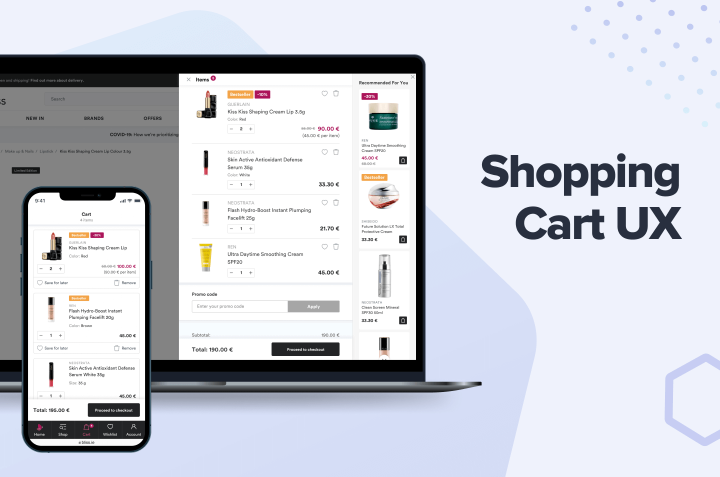
Create a Painless Transaction
Checkout process is the last step, after several steps like finding products and its descriptions, dropping the products in customer’s shopping carts,etc. So you should take it seriously. Otherwise the checkout process is throwing up more hurdles than a track meet by: no clear return policy, unexpected cost (shipping, insurance), etc.
How can you prevent it from happening?
The first thing is to meet the shipping objection head-on. Post your shipping fees and policies on the home page and product pages. It eliminates any unpleasant surprises. Moreover, if your platform restricts payment types, it’s time to upgrade to one that doesn’t. You should be able to process international credit and banking cards, online payment gateways like PayPal and Stripe plus digital wallets like Apple pay and Amazon pay.
4. The checklist of eCommerce website cost
How much do eCommerce websites cost? is the first question that comes to mind for most small to medium business when considering building a new website. In fact, it’s hard to put a price tag as it depends on your budget and the goals you’ve set for your site and business. According to research, the average cost for an eCommerce website often ranges from $1,000 (for a small business website) to $96,000 and more (for a complex custom site).
- In terms of actual dollars, the cost could be less than $1,000 or more than $10,000 to design a website for a small business.
- A basic website might cost from $100 to $600, depending on your requirements. The price of a function-rich site might reach $20,000 or even higher.
- The cost to design ecommerce website ranges from $2,600 to $95,000. It’s possible that you’ll have to spend much more to build a complicated custom website.
- It is about $12,000 to $150,000 for the ecommerce website design cost, while routine site maintenance ranges from $35 to $5000 per month — or $400 to $70,000 per year.
Depending on the above data, it is clear that there are a lot of factors that influence the final eCommerce website price. Let’s see some of the elements that affect the actual site development cost.
- Website platform cost.
- Hosting cost.
- Template cost.
- Add Ons and extensions cost.
- Cost of website development packages.
- Interactive Multimedia.
